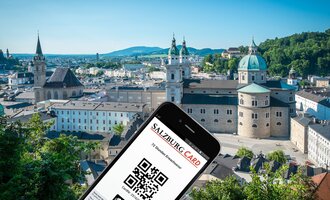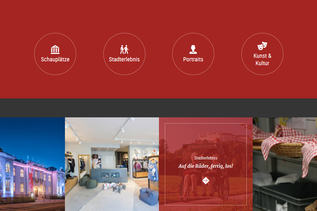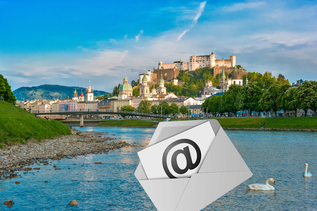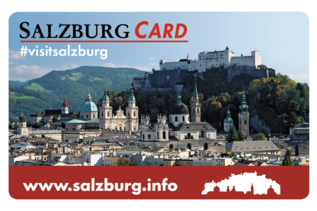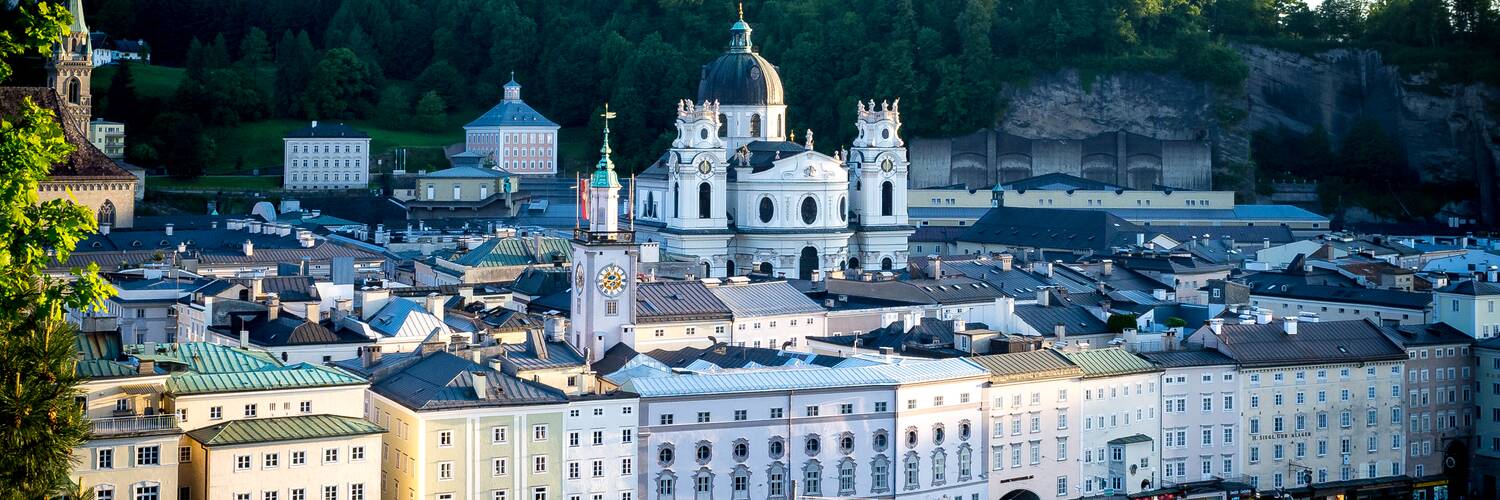
UNESCO World Heritage
Art, culture and a unique history: Since 1997, Salzburg has been a proud member of the UNESCO World Heritage List – a city of “outstanding value to humanity”. We invite you to experience it for yourself, as you pay a visit to the historical district of downtown Salzburg!
World Heritage-Listed Salzburg – of outstanding value to humanity
Salzburg isn’t just rich in sightseeing attractions. This city on the River Salzach looks back on a long history as a metropolis of the arts and culture. The cultural heritage of this city shaped by the Baroque has its origins in a vibrant exchange with its southern neighbors, especially Italy.
Salzburg was very much a melting pot for the cultures and arts of northern and southern Europe. Even in early times, craftsmen and artists were drawn to Salzburg. Many of the baroque buildings were created by Italian architects such as Vincenzo Scamozzi and Santino Solari. There is very good reason why Salzburg is known as the “Rome of the North”. This title can also be traced back to the special status once enjoyed by Salzburg: The archbishop of Salzburg was permitted to appoint his own bishops to his four subordinate bishoprics, just as the pope did elsewhere. And until 1806, he ruled over the second largest ecclesiastical state in the world. Only Rome was bigger. The city’s sacred buildings captivate visitors from around the world with their baroque beauty. That said, the bourgeois homes of the Middle Ages and the broad, Italian-style plazas are likewise beautiful to look at. These sacred and secular buildings from different centuries have been preserved well, a major reason why Salzburg was added to the World Heritage List.
The historic city center of Salzburg: a walk through the centuries
The vibrant flair and special charm of Salzburg can best be experienced by taking a leisurely stroll through the historical downtown district. In fact, Salzburg’s “Old City” lends itself perfectly to exploration on foot. The River Salzach actually divides it into two halves: the right side, including the Linzergasse, Platzl and Steingasse, and the left side. It is this left side, the older section of the city, which is on the UNESCO World Heritage List, also incorporating the Kaiviertel district as well as Festungsberg and Mönchsberg mountains.
The city mountains shape the face of the Old City, adding to its already captivating charm. Enthroned on the Festungsberg, high above Salzburg, is the emblem of this city, Hohensalzburg Fortress, built in the year 1077. You can either make your way up there on foot, or simply take a comfortable ride on the funicular. The left bank of the Salzach is also world famous for the Getreidegasse, where you will discover the house where Wolfgang Amadeus Mozart was born. The city owes much of its identity as a metropolis of music and the arts to this musical wunderkind. Though not only to him: In 1920, theater director and producer Max Reinhardt founded the Salzburg Festival, thereby underscoring Salzburg’s reputation as an important center of the arts and culture.
The ultimate in culture: Mozart and the Salzburg Festival
When the call to “Jedermann!” echoes out over Cathedral Square, you know it’s that time of year again: Festival season! It was on 22 August 1920 that Hugo von Hofmannsthal’s play was first performed on Cathedral Square in Salzburg, directed by Max Reinhardt. However, the origins of the city’s love for culture extend back much further.
In fact, it is generally assumed that the first opera ever performed north of the Alps was presented in Salzburg. The court of Salzburg’s prince-archbishops also had a great appreciation for music and theater. Venues included Salzburg University as well as Salzburg Cathedral. Dramatic productions included everything from medieval mystery- and Passion plays to others with a popular appeal to the middle classes. The Salzburg Festival is regarded as one of the most important celebrations of opera, theater and art in the world today.
As you can see, Salzburg was already a city filled with culture and open to the arts when, on 27 January 1756, Wolfgang Amadeus Mozart came into this world. In Salzburg’s historical district, you will encounter traces of our wunderkind practically everywhere you go. Whether Mozart Square, the Mozart Residence or Mozartsteg Bridge – the famous son of Salzburg is ever-present in the city of his birth.
The Historic Center of Salzburg: on the UNESCO World Heritage List
Only the most exceptional natural and cultural monuments make it onto the UNESCO World Heritage List. Aside from architectural edifices and city ensembles, the World Heritage sites also include cultural landscapes, industrial monuments, and works of art such as petroglyphs. Austria itself currently boasts twelve World Heritage sites. By signing the UNESCO agreement in 1993, Austria has committed itself to protecting and preserving those World Heritage sites within its borders. The historic center of Salzburg has been a member of the UNESCO World Heritage List since 1996/1997. The protected area of the Old City spans 236 hectares and some 1,000 unique objects.

